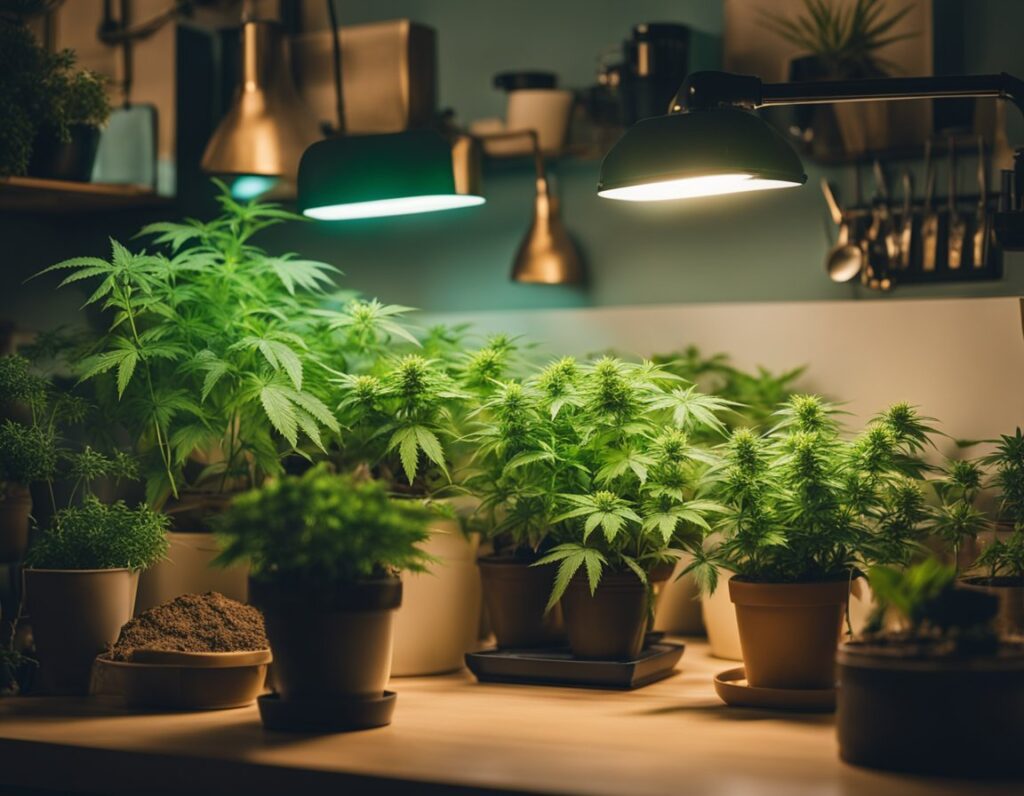
Indoor cannabis cultivation allows you to manage environmental conditions and ensure optimal growth. How to grow cannabis indoors in Vancouver involves understanding cultivation fundamentals, selecting appropriate seeds, and designing an efficient grow room.
To embark on your indoor cannabis journey, familiarize yourself with essential cultivation practices. Lighting is vital; select high-quality grow lights to maximize your yield. Common options include LED, HID, and fluorescent lights.
Temperature and humidity must be monitored closely. Aim for temperatures between 70-85°F (21-29°C) during the day. Adjust humidity levels based on plant growth stages, starting with higher humidity for seedlings and lowering it for flowering.
Soil choice impacts growth as well. Use high-quality potting mix or soil specifically designed for cannabis. This groundwork sets the stage for healthy plants.
Choosing the right seeds is crucial for successful cultivation. Start by deciding between feminized seeds or auto-flowering strains. Feminized seeds ensure that you grow female plants, which produce the desired buds. Auto-flowering strains, on the other hand, switch from the vegetative to flowering stage automatically, making them suitable for beginners looking for quicker harvests.
Consider different marijuana strains based on your preferences. Indica strains tend to be more relaxing, while Sativa strains are uplifting. Research suggested genetics and consult reputable sources to select the best indoor marijuana seeds, focusing on traits like yield, potency, and growth characteristics.
Your indoor grow room should optimize conditions for cannabis plants. Begin by choosing a location with adequate space and access to electricity.
Use reflective materials on walls to increase light efficiency. Proper ventilation is essential, so ensure your setup features fans and exhaust systems to maintain airflow and manage temperature.
Consider utilizing hydroponics or soil-based setups depending on your expertise and resources. Ensure enough room for plants to grow freely while allowing for easy access to tend to them.
Choosing the right pots, typically around 5-10 gallons for larger plants, is also important for root development. By designing a thoughtful indoor grow room, you set a solid foundation for a successful growing experience.
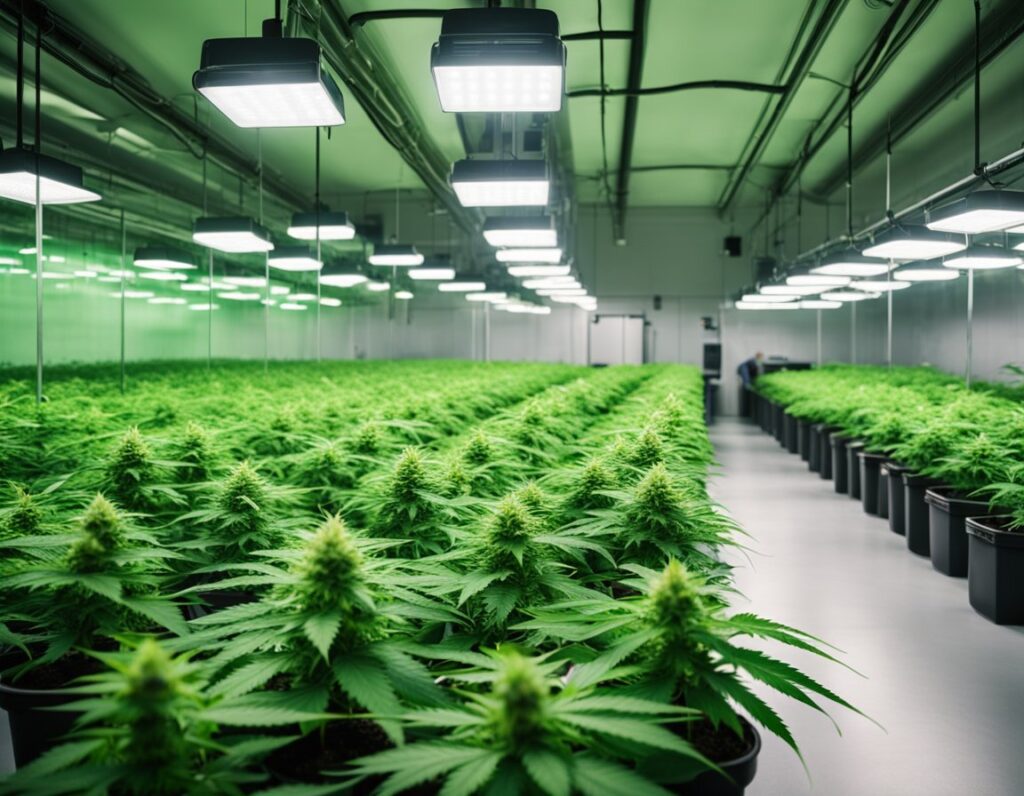
Creating a successful indoor cannabis garden in Vancouver requires specific equipment tailored to the unique needs of your plants. Key components include appropriate lighting, ventilation systems, and climate management tools to ensure optimal growth conditions, especially considering Vancouver’s often humid climate.
Selecting the right lighting system is crucial for robust cannabis growth. LED grow lights are a popular choice due to their energy efficiency and low heat emissions. They provide a balanced spectrum that promotes healthy photosynthesis.
Metal halide (MH) lights emit a blue spectrum ideal for the vegetative stage, while high-pressure sodium (HPS) lights deliver a red spectrum that supports flowering. Another option is fluorescent grow lights, which are suitable for seedlings and low-light stages. When setting up your lighting, consider using a grow tent to maximize light reflection and control the environment.
Proper ventilation ensures fresh air circulation, which is vital for plant health. Install exhaust fans to remove stale air and maintain temperature control.
Using ducting to route airflow from outside into your grow space can further enhance air quality. To manage odors, a carbon filter is essential. Place it in line with your exhaust system to neutralize smells effectively without affecting airflow. Good ventilation promotes healthy growth while minimizing issues related to humidity and heat.
Managing temperature and humidity is essential for thriving cannabis plants. Aim for a temperature range of 70-85°F (21-29°C) during the day and slightly cooler at night. Avoid drastic temperature fluctuations as they can stress plants.
Humidity control varies by growth stage. For seedling stages, maintain humidity around 65-70%. During flowering, reduce humidity to about 40-50% to prevent mold development. Use dehumidifiers or humidifiers as needed to maintain these levels. Monitoring these parameters ensures optimal conditions for each stage of growth.
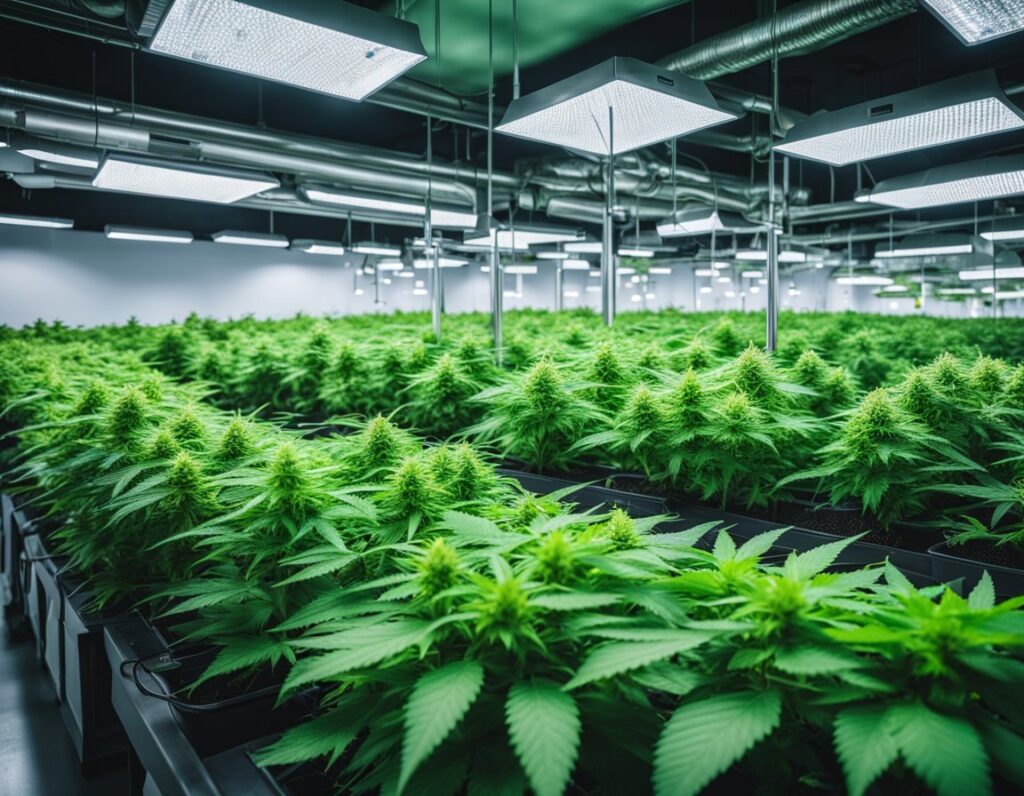
Creating the ideal environment for indoor growing in Vancouver involves carefully managing light cycles, CO2 levels, and preventing pest infestations. Each aspect contributes significantly to robust plant growth and overall yield.
Cannabis plants require precise light cycles to thrive. During the vegetative stage, providing 18 hours of light and 6 hours of darkness is optimal. This encourages healthy growth. In contrast, the flowering stage demands a shift to 12 hours of light and 12 hours of darkness to stimulate blooming.
Light intensity is also crucial. It is measured in PPFD (Photosynthetic Photon Flux Density). Aim for around 400-600 PPFD during vegetative growth and 600-900 PPFD during flowering. Using LED or HID lights can help achieve these levels while maintaining energy efficiency.
CO2 is vital for photosynthesis and overall plant health. The ambient air in a typical indoor setting contains about 400 ppm (parts per million) of CO2. For optimal growth, you should aim to raise levels to around 1,200-1,500 ppm during the flowering phase.
Consider using a CO2 tank with a regulator or CO2 bags to enhance levels. It’s essential to monitor levels using a CO2 meter. Increase CO2 during daylight hours when plants are actively photosynthesizing, but ensure proper ventilation to prevent stagnation and promote air exchange.
Pests can severely impact your cannabis crop. Common pests include aphids, spider mites, and whiteflies. To prevent infestations, maintain cleanliness in your grow area and inspect plants regularly.
Introduce beneficial insects like ladybugs or predatory mites. Additionally, consider using organic pest control methods, such as neem oil or insecticidal soap. Monitor for yellowing leaves or webbing, as these are telltale signs of pest issues. Quick identification and action are vital to maintaining plant health.
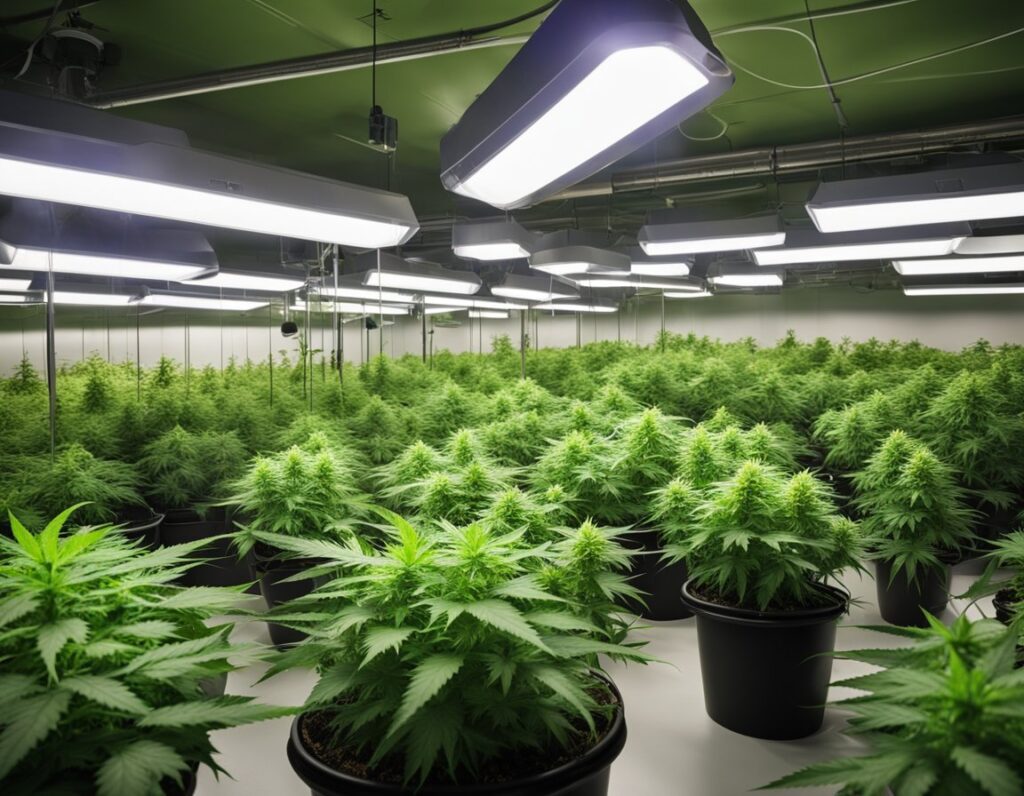
To achieve high yields in indoor cannabis growing, implementing advanced techniques is essential. Focus on systems like hydroponics, effective plant training methods, and precise harvesting techniques to enhance robust growth.
Hydroponics and aeroponics are two effective methods for maximizing yields. In hydroponics, plants grow in nutrient-rich water rather than soil, offering better control over nutrients and pH levels. Aeroponics takes this further by misting roots with nutrient solutions in an air environment, promoting rapid growth and larger yields.
Benefits of Hydroponics:
Aeroponics Advantages:
Adopting these systems can significantly enhance your indoor growing environment.
Advanced plant training techniques can dramatically increase cannabis yields. Techniques such as low-stress training (LST) and high-stress training (HST) help shape your plants for optimal light exposure.
Low-Stress Training (LST):
High-Stress Training (HST):
Implementing both methods can lead to more robust plants and superior harvests.
Proper timing and techniques for harvesting play a crucial role in maximizing yields. Monitoring the trichomes on your plants will guide you on when to harvest. Aim for a balance between cloudy and amber trichomes for the best potency.
Post-harvest, drying and curing techniques influence the final product’s quality. Control temperature and humidity to preserve flavor and potency, maximizing the yield’s potential.
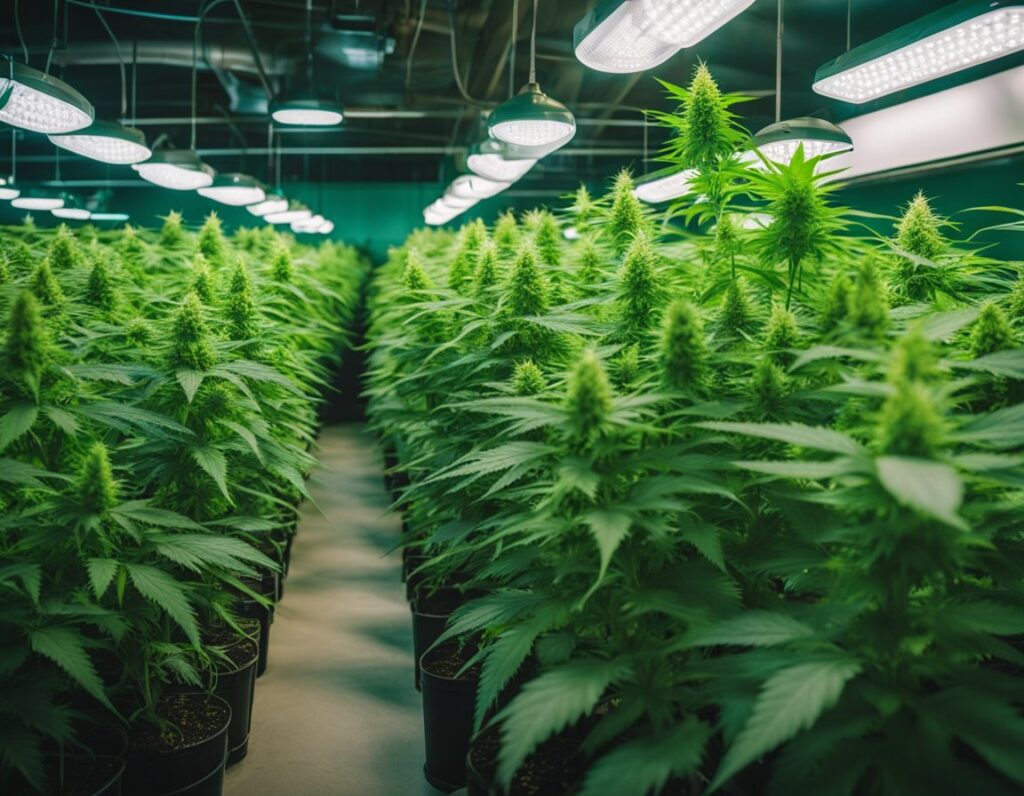
When considering how to grow cannabis in Vancouver, it’s essential to evaluate the differences between indoor, outdoor, and greenhouse methods. Each approach has its own set of characteristics that can impact your cultivation experience and results.
Indoor cultivation provides you with complete control over environmental factors such as light, humidity, and temperature. You can create optimal conditions tailored to the specific needs of your cannabis plants throughout their growth stages. However, the setup can be expensive, with costs for grow lights, ventilation, and other equipment adding up.
Outdoor growing relies on natural elements, which can lead to larger yields in the right conditions. Yet, you have limited control over environmental factors like weather and pests. This can result in inconsistent quality and possibly lower potency compared to indoor methods.
An indoor garden offers advantages that a greenhouse cannot fully replicate. For starters, you can maintain a controlled environment, ensuring your plants thrive regardless of external weather conditions. Indoor setups allow for stealth growing, making it less likely for unwanted attention when cultivating marijuana seeds in Vancouver. In a greenhouse, while natural sunlight can benefit plants, it may introduce challenges like pests and temperature fluctuations. Indoor gardens also enable year-round cultivation, giving you the ability to produce multiple harvests within a single year. This method reduces the need for natural light and allows you to tailor nutrient regimens to suit your plants’ needs precisely.
This section addresses common inquiries regarding how to grow cannabis indoors in Vancouver, including legal cultivation limits, climate considerations, and the suitability of various strains for novice growers.
In Vancouver, individuals aged 19 and older can legally grow up to four cannabis plants per household. This limit is in accordance with British Columbia’s Cannabis Control and Licensing Act, with restrictions such as ensuring the plants are not visible from public spaces and abiding by any rental or strata agreements.
To grow cannabis beyond the personal household limit, individuals must apply for a commercial cultivation license under Health Canada’s Cannabis Act. This process involves submitting an application, meeting security requirements, and ensuring compliance with health and safety standards.
To cultivate cannabis indoors successfully, aim for temperatures between 20-26°C (68-78°F) during the day and slightly cooler at night. Maintain humidity levels around 40-60% during the vegetative stage, and lower it to 40-50% during flowering to prevent mold and promote healthy growth.
If you exceed the legal limit of four plants, you may face penalties that include fines and potential criminal charges. Additionally, your plants may be confiscated by law enforcement.
For novice growers, strains like Northern Lights, Blue Dream, and Green Crack are ideal. These strains are known for their resilience, shorter flowering times, and ability to thrive in a controlled indoor environment.
We ship and deliver world wide via USPS and various couriers.
We offer a wide range of secure and anonymous online payment options.
We care about you, our customer. Please contact us with any questions or concerns.
Find out more about the benefits of being a loyal and regular customer.
WE ARE EVERY GROWERS ONE STOP SHOP TO ACQUIRE PREMIUM CANNABIS SEEDS FOR SALE IN THE USA, CANADA AND AUSTRALIA

Farmers Lab Seeds 2024, | All Right Reserved
Seeds are sold as novelty items, souvenirs, and collectibles. They contain 0% THC. We encourage our customers to check the legislation in their Country, State, Province, and Municipality prior to purchasing items from our store. We do not provide growing information.
All seeds are sold as hemp, and lab tested under 0.3% THC. This product is not for use by or sale to persons under the age of 21. This product should be used only as directed on the label. It should not be used if you are pregnant or nursing. Consult with a physician before use if you have a serious medical condition or use prescription medications. A Doctor’s advice should be sought before using this and any supplemental dietary product. All trademarks and copyrights are property of their respective owners and are not affiliated with nor do they endorse this product.
These statements have not been evaluated by the FDA. This product is not intended to diagnose, treat, cure or prevent any disease. Individual weight loss results will vary. By using this site, you agree to follow the Privacy Policy and all Terms & Conditions printed on this site. Void Where Prohibited by Law.